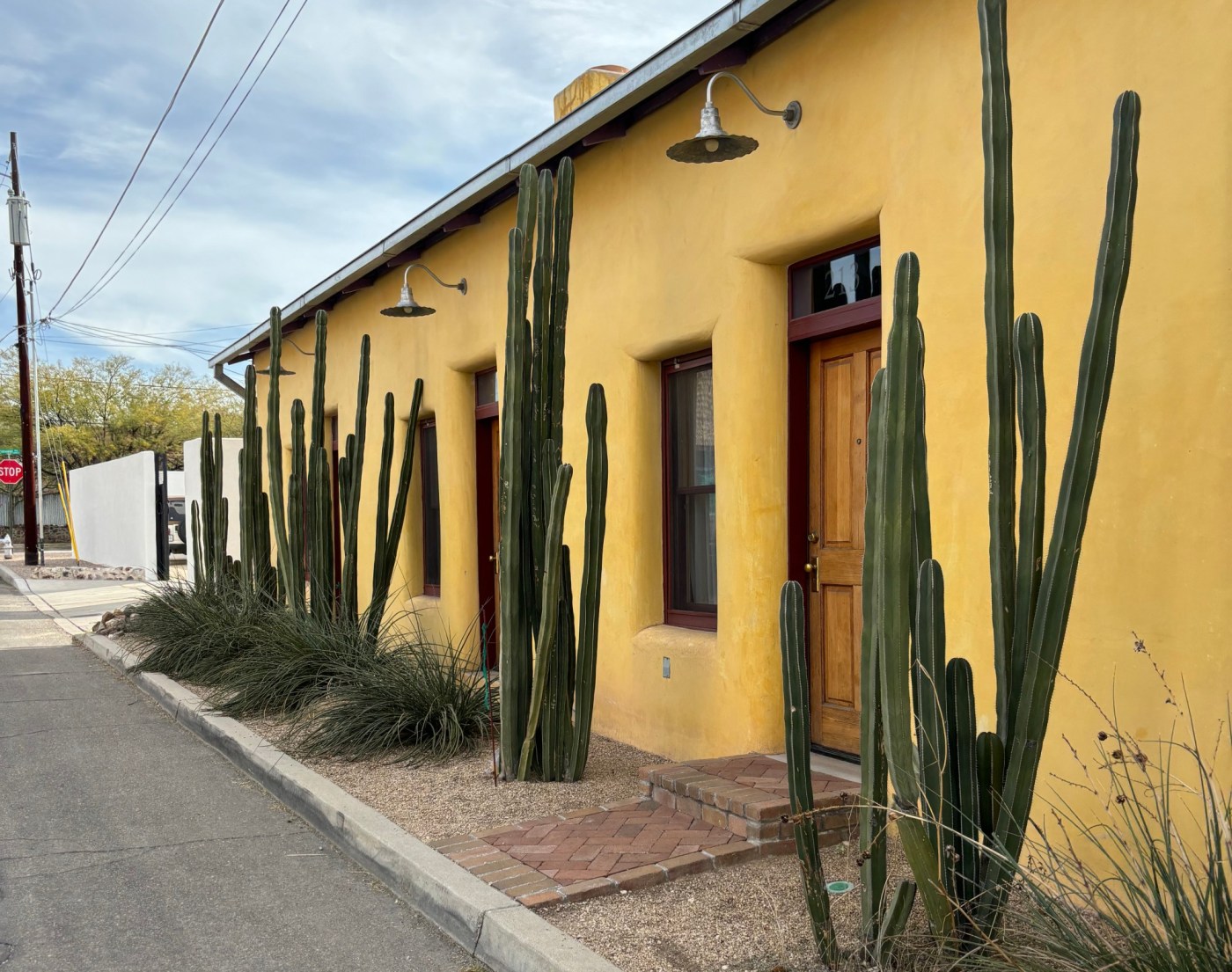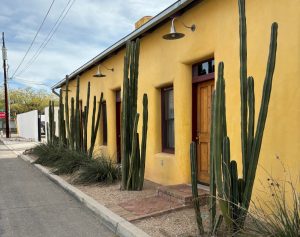
10 things you can only do in Tucson (including the southernmost ski resort in the country)
If you’re looking for a quick getaway with one-of-a-kind experiences this winter, put Tucson on the list. A flight to Arizona’s second-largest city brings visitors to a unique patch of the American Southwest, with history, food and sites that can only be seen and tasted here.
Related Articles
I spent the night in a lighthouse on a tiny California island. Here’s how you can too
Head north for great tubing, fat bike and zip line family fun
Lima delight: A surprising thing happened on the way to Machu Picchu
How to book a unique all-inclusive vacation that’s not terrible
Snagging a better seat on the plane and other travel hacks
When I headed to Tucson for a winter weekend of milder temperatures in January, my expectation was to have Southwestern experiences similar to those I’ve had when in New Mexico or southern Colorado or even Phoenix. Instead, what I found was a city with its own identity that might just require a return visit to truly appreciate all that it has to offer.
You’ll need a rental car — consider a four-wheel-drive model — to explore Tucson’s environs properly. While Tucson is not nearly as large as Phoenix (Tucson’s population is close to 550,000 compared to Phoenix’s more than 1.6 million), you’ll be leaving the downtown area to go to at least one national park, a Native American reservation, a ski resort or a scientific research facility.
Note: While this is not a comprehensive list of all sites to visit in Tucson, these are the ones I found that were things that can only be done while in this city.
The El Tiradito Wishing Shrine is part of Tucson’s Barrio Viejo. (Mindy Sink, Special to The Denver Post)
The El Tiradito Wishing Shrine is considered the only shrine for a sinner, according to local lore. Tucson is Arizona’s oldest city being incorporated in 1877, and in its infancy was home to many farms and ranches. The legend is that it was around this time that Juan Oliveras, a young married ranch hand, had an affair with his mother-in-law, who was the wife of a prominent local sheep rancher. Juan was murdered by his enraged father-in-law, and the shrine was erected on that spot. Although the shrine is not officially sanctioned by the Catholic Church, it did get registered on the National Register of Historic Places in the 1970s, which saved further destruction of its surrounding historic neighborhood, Barrio Viejo.
Tucson’s Barrio Viejo is what’s left of the city’s original neighborhood. This historic residential and commercial district that dates back to the late 1800s was largely bulldozed in the 1970s to develop the nearby Tucson Convention Center, but many blocks were saved and are worth exploring. On my visit here, I was expecting something like the plazas of Santa Fe or Taos in New Mexico, but was delighted to find something much different and particular to this city. I do recommend signing up for or downloading a walking guide or having specific points of interest as destinations. Some suggestions include the Coronet Café (historic home turned into three dining environments), Etherton Gallery (photography collectors), Carly Quinn Designs (original tile art), and enjoy the sights of the colorful stucco homes that line the streets.
Try the Sonoran dog when in Tucson, a local specialty of the casual dining scene. (Mindy Sink, Special to The Denver Post)
UNESCO — the United Nations Educational, Scientific and Cultural Organization — has named Tucson a Creative City of Gastronomy. This recognition — one of only two in the United States — is due to the influences of Mexican and Native American ingredients and dishes in today’s modern cuisine. I confess that I expected typical Tex-Mex fare but even at El Charro Café, which bills itself as the country’s oldest Mexican restaurant, I dined on unexpected preparations of classics. For example, the enchiladas sonorenses are two ground corn masa cakes smothered in red chile and green olives. At Tito and Pep, the menu’s focus is mesquite-fired cuisine, including Sea of Cortez delicacies (though land-locked, Tucson is relatively near the Sea of Cortez). Mesquite grows native here and is liberally used in kitchens to enhance flavors. Although not haute cuisine, you may want to try a Sonoran dog, which hails from Hermosillo, Mexico. I stopped at Ruiz Hot Dogs “Los Chipilones” on a dusty busy corner where a food truck includes indoor shaded diner-style seating for customers to nosh on a hot dog with pinto beans, onions, salsa, mayonnaise, mustard and other optional toppings. Other highlights included green chile garganelli bolognese at Zio Peppe, fresh agua frescas and award-winning tacos at Seis Kitchen, and dining outside in a charming courtyard at Coronet in Barrio Viejo. When planning your breakfast, lunch or dinner, look for those ingredients that are in season and grown here.
At Saguaro National Park in Tucson, you will see a variety of cactus and historic sites. (Mindy Sink, Special to The Denver Post)
The southernmost ski resort in the country is atop Mount Lemmon, which transports visitors from the city’s elevation of 2,389 feet above sea level to 9,171 feet high where snow falls in winter. When there’s enough snow, you can ski and snowboard here, and when the snow is not falling you can enjoy the view from the Sky Ride. Visiting here is tricky so do your research — the Sky Ride is not available to sightseers when the runs are open to skiers; the road up is limited to four-wheel-drive vehicles when there is snow; the resort is closed on Tuesdays and Wednesdays; there are no online ticket sales. The good news — it’s a bargain with $15 lift tickets! The drive up starts with cactus and ends in an alpine forest.
The saguaro cactus only grows in the Sonoran Desert, which stretches from northern Mexico to parts of California and Arizona. Saguaro National Park is the only national park dedicated to protecting these large cacti and it’s right on the edge of Tucson. Aim for the park’s west side with abundant trails, scenic byways and forests of cactus covering the Rincon Mountains. There is also a smaller Saguaro National Park on the east side of town, and this includes an 8-mile scenic drive where you can pull off for hikes among the cacti and mesquite — I saw two wild coyotes taking a stroll near a trail here! If you’re still craving more cactus viewing and have time to make a 2.5-hour drive from Tucson, plan to visit Organ Pipe Cactus National Monument on the Mexican border when you can see these cacti in their native habitat — the only place in the U.S. where they grow in the wild.
The San Xavier del Bac Mission is on the Tohono O’odham Nation reservation southwest of Tucson. (Mindy Sink, Special to The Denver Post)
The Tohono O’odham Nation’s reservation land is southwest of the city of Tucson, and here you will find the San Xavier del Bac Mission. It’s not clear if this is the only restored mission on a reservation, but it could be one of the best restored ones. What’s unusual here is that the building is of European design. The church is open to visitors unless there is a service in process. This National Historic Landmark is credited with being the oldest intact European structure in the state — it was completed in 1797. The details in the carved and painted ceilings, along with unusual statuary, are worth a lingering stop here.
Spa-goers in Tucson will find a few treatments that are only offered here. I tried the flower ritual at Hiapsi Spa at Casino del Sol, which starts with burning copal, a local tree sap, to rid the environment of negative energies. Locally harvested sage and other herbs are distilled for use in the relaxing body treatment.
You can learn about Earth, also called Biosphere 1, by visiting Biosphere 2 just north of Tucson. Back in the early 1990s, there were two “missions” to Biosphere 2, which involved various experts committing to life inside these buildings for an extended time, where they had to grow and process all of their own food, maintain an Earth-like environment, and all just get along with one another. Today, you can take both self-guided and guided tours of the campus learning what did and didn’t work and how the space is used today. I highly recommend planning for the “add-on” or guided tours (you will see the buildings’ “lungs” through a series of tunnels, for example), but either way you will learn a lot about things like condensation and how much oxygen plants need. I left here with a renewed appreciation for keeping Biosphere 1 in working order because a replacement is not appealing.
Take a tour of Biosphere 2 in Tucson to learn more about the scientific research done here. (Mindy Sink, Special to The Denver Post)
Don’t just watch the sunrise in Tucson; honor this momentous daily occurrence with a ceremony. At the JW Marriott Tucson Starr Pass Resort & Spa, you get an excellent view of downtown Tucson and access to an exclusive Mitakuye Oyasin Morning Ritual on the terrace. You’ll join your fellow guests around a fire pit where you will be given supplies to make a sage prayer tie and then participate in an eagle feather blessing. It’s a lovely way to start the day in community and watch the desert come to life.
All of this talk of gastronomy made me curious to learn more about the history of the food grown here, so I stopped by the Mission Garden. While my visit was casual, you can sign up for guided tours, tasting history (sample the oranges and lemons that grow here), or learn about O’odham agriculture. This is not a botanic garden or a community garden that you might typically visit, and it’s hard to classify as there are many layers to the history of this site and how it fits in to the modern culture. Put it this way: when contestants of Top Chef found themselves at Mission Garden with the task of making a meal from the food growing on-site, they could literally pick figs, quince, oranges, lemons, zucchini and more. This is a living museum to local food.


